- Unit 1 Programming Assignment 2025-26 | ESOFT Metro Campus
- K/651/4745 Unit 1 Teaching My Subject Written Assignment | Britannia Education Group
- H/650/1099 Level 4 Academic Writing and Research Skills Assignment Brief | LSBU
- ASB-4012 Codding for Business Application Assignment – Project in R | Bangor University
- Unit: Team Management in Health and Social Care OTHM Level 5 Diploma Assignment
- BTEC Level 3 Unit 4 Programming Assignment – Concepts of Programming
- HSO4004 Principles of Care Assignment-1 and Assignment-2 Semester-1 September 2025-26
- 1031ENG-N Civil Engineering Construction Technology In-Course Assessment (ICA) Group Report | Teesside University (TU)
- MOD009382 Finance and Governance in Health and Social Care 011 Assessment Coursework Report | Anglia Ruskin University
- Geotechnical Engineering Assignment 2025/26 – University Of Surrey (UniS)
- Essentials of Adult Nursing Summative Assessment – University of Roehampton London (UoRL)
- BMP3006 Practical Digital Marketing Assessment 1 Individual Written Portfolio September 2025 – Regent College London
- CIPD_5HR03_24_01 5HR03 Reward for Performance and Contribution Level 5 Associate Diploma Learner Assessment Brief – Chartered Institute of Personnel and Development
- AF6010/LD6041 Strategic Management Accounting Assessment Brief AY2026 – Northumbria University Newcastle (NUN)
- AB1 Lead Practice to Support Safeguarding of CYP & Harm & Abuse NVQ Level 5 Diploma Unit 4 and Unit 8 Activity Assignment Brief, Cambridge Management and Leadership School (CMLS)
- BTEC Unit 4: Leadership and Management Assignment Brief 1 2025-26, City of London College
- Culinary Arts Management (chef) Assignment Social Science Research Proposal , University College Birmingham (UCB)
- Unit 4002 Engineering Mathematics (A/651/0708) Assignment Brief 2025-2026, Barnsley College (BC)
- Nutrient Diploma Course Assessment 2025-26, The College of Naturopathic Medicine
- Unit 3 Management of Human Resources Pearson BTEC Diploma Assignment Brief 2025-2026 – Lyceum Campus UK
Financial Mathematics and Investment Valuation Assignment: Practical Concepts of Loans, Bonds, Interest Rates, Returns, Convexity, and Equity Valuation
| University | University Of Cambridge (UOC) |
| Subject | Finance |
Question 1
An investor wishes to borrow £35,000 from a bank at an effective rate of interest of 7.0% per annum to finance the expansion of his business. The project is expected to generate net revenues of £6,120 per annum payable in arrears for the next 11 years.
(a) Find the discounted payback period for this project (in whole years).
Answer : ⬜
(b) Once the loan has been repaid, the investor can earn 5.0% per annum effective on investing the revenues received. Making use of the result from part (a), find the total profit that the investor will make at the end of the 11-year investment project.
Answer : ⬜
Question 2
A fixed interest stock with an optional redemption date at any time between 7 and 23 years from the date of issue is redeemable at 103%. It pays coupons of 7.0% per annum half-yearly in arrears.
An investor, subject to 16% income tax, purchases two months after issue a £11,000 nominal of the bond and obtains a net effective yield of 3.9% per annum.
Calculate, to 2 decimal places, the with-dividend price paid by the investor.
Answer : ⬜
Question 3
A fixed interest stock is redeemable at 118% at the option of the borrower at any time between 9 years and 16 years from the date of issue. The coupon rate is 4.8% per annum payable quarterly in arrears. What price should be paid per £100,000 nominal by an investor subject to both income tax and capital gains tax at rates of 32% and of 31%, respectively, wishing to achieve a net effective quarterly yield of 2.9%?
Express, to 2 decimal places, the price that should be paid by the investor.
Answer : ⬜
Question 4
In July 2012, the government of a country issued an index-linked bond redeemable at 110% in exactly 2 years time. Coupons were payable half-yearly in arrears at an annual rate of 6.2%. Interest and capital payments were indexed by reference to the value of an inflation index with a time lag of 6 months.
An investor liable to 20% income tax has purchased £14,000 nominal at issue and held it to redemption. The inflation index for the given period was as follows:
Inflation indexes for 2012 — 2014
| Year | January | July |
|---|---|---|
| 2012 | 100.8 | 105.1 |
| 2013 | 107.2 | 112.1 |
| 2014 | 114.1 | 117.4 |
Calculate the price paid at issue for the bond, given that the investor has achieved an effective money yield of 7.6% per annum from this investment.
Answer : ⬜
Do You Need Assignment of This Question
Question 5
An equity pays dividends annually in arrears. An investor purchases a number of shares exactly 2 months after the last dividend payment. The next dividend due is expected to be £13.95 per share. Subsequent dividends are expected to increase in perpetuity by 5.6% per annum.
Assuming an interest rate of 7.9% pa, calculate the value of each share. You should give your answer to 2 decimal places.
Answer : ⬜
Question 6
An individual is investing in a market where spot rates and forward rates apply.
In this market, if at time t=0 he agrees to invest £4.9 for two years, he will receive £7.7 at time t=2 years. Alternatively, if at time t=0 he agrees to invest £5.6 at time t=1 for either one year or two years, he will receive £7.7 or £8.4 at times t=2 and t=3, respectively.
Calculate the price per £5,000 nominal that the individual should pay for a fixed-interest bond bearing annual interest of 4.7% and is redeemable after 3 years at 100%. State your answer at 2 decimal places.
Answer : ⬜
Question 7
Using an effective rate of interest of 4% per annum, calculate the CONVEXITY of the following series of payments:
£250 payable after 6 years,
£500 payable after 9 years, and
£500 payable after 15 years.
Express your answer to FOUR decimal places.
Answer : ⬜
Question 8
Let iti_t denote the effective annual return achieved on an equity fund achieved between time (t−1) and time t.
Annual log-returns on the fund, denoted by ln(1+it)\ln(1 + i_t), are assumed to form a series of independent and identically distributed Normal random variables with parameters
μ = 7% and σ = 10%.
An investor has a liability of £10,000 payable at time 20.
Calculate the amount of money that should be invested now so that the probability that the investor will be unable to meet the liability as it falls due is only 5%.
Express your answer to the NEAREST INTEGER and do NOT include a “£” sign.
Note: From standard Normal tables, we have Φ(−1.645)=0.05.
Answer : ⬜
Buy Answer of This Assessment & Raise Your Grades
Struggling with advanced financial mathematics assignments like equity valuation, spot & forward rates, convexity, and log-returns probability? Don’t let complex calculations hold you back. At Students Assignment Help UK, our finance experts simplify every step, ensuring 100% accuracy and clarity. Get customised finance assignment help UK that matches your university guidelines, delivered plagiarism-free and on time. With our trusted support, boost your grades confidently with Students Assignment Help UK.




